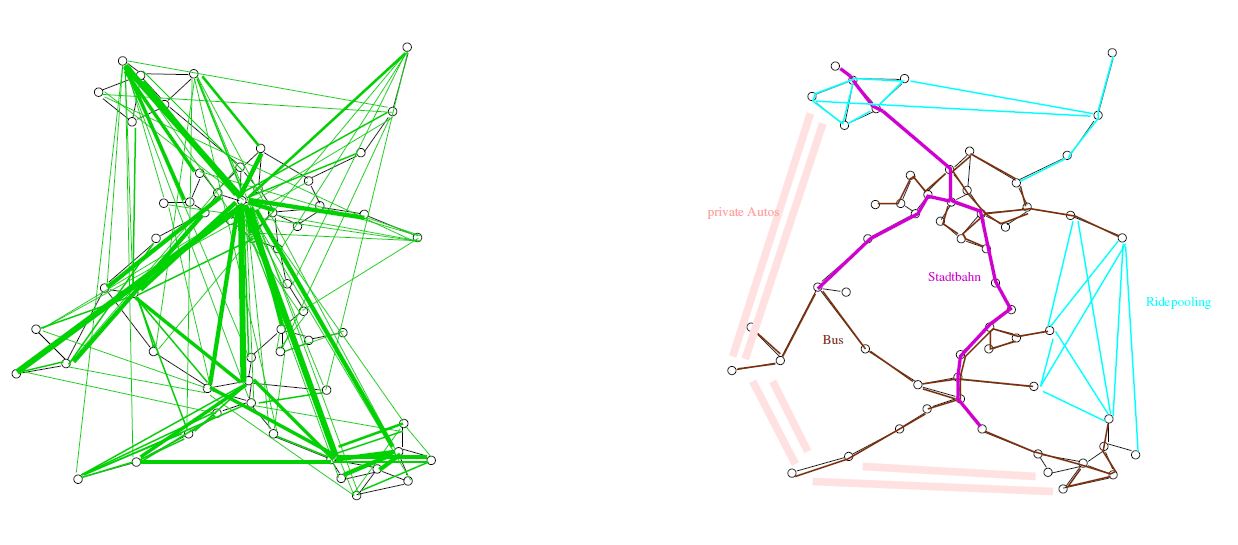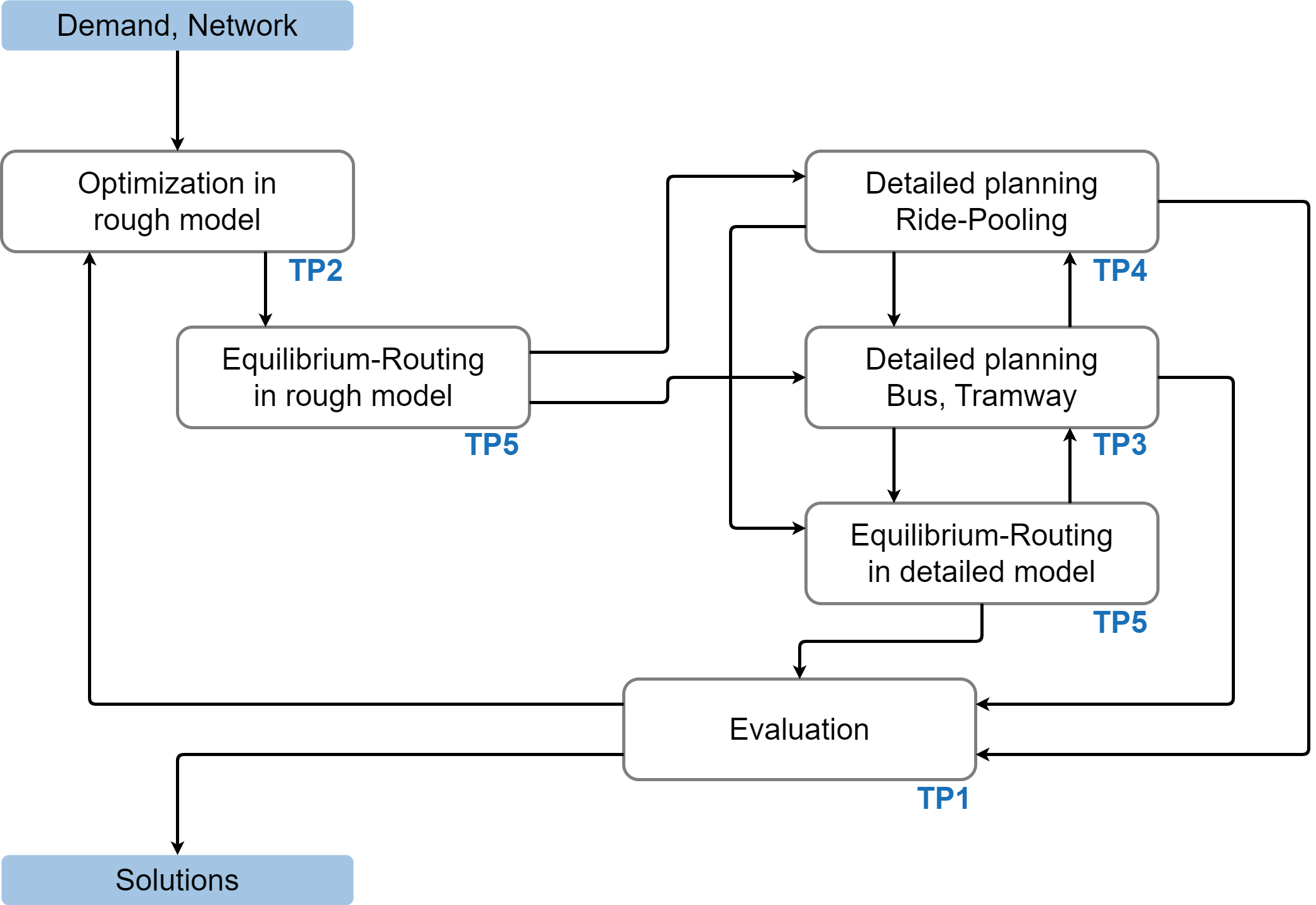
SynphOnie
Synergies from physical and traffic planning models for multi-criteria optimization of multi-modal demand-oriented transport
Stuttgart University / Fraunhofer ITWM / RPTU Kaiserslautern-Landau / Passau University
Project Description
SynphOnie's Goal
Given a mobility demand and a road network, the task is to determine a "good" transportation offering.
"Good" means:
- Short travel times for passengers
- Low costs for operators
- Low CO2 emissions, low energy consumption
Specific Questions:
- Is a tram needed?
-
In which areas do we provide scheduled bus services?
Which routes are established? -
Where do we complement with ridepooling offers?
How many vehicles are needed? - For which mobility desires do we recommend a car?
Illustration
Given: Road network and demand

Goal: Determine a good transportation offer

Evaluation of Transportation Offer
Required for this:
- 🚌: Lines, frequencies, schedule, rotation plan, (duty roster)
→ Costs, traveled kilometers (energy and CO2) - 🚈: Lines, frequencies, schedule, rotation plan, (duty roster)
→ Costs, traveled kilometers (energy and CO2) - 🚐: Number of vehicles, route planning, typical routes for a day
→ Costs, traveled kilometers (energy and CO2)
Determine passenger behavior (given transportation offer under equilibrium constraints)
- → 🚗 Costs, traveled kilometers (energy and CO2)
- → Travel times
Challenge and Our Approach
Challenge:
- Public transportation planning is challenging (including the timetable alone)
- Routing under equilibrium constraints is challenging
- Optimally determining 🚗🚐🚌🚈 together is challenging
⇒ We need a simplification
Idea:
Decomposition into
- A coarse model and
- Models for fine planning of 🚗🚐🚌🚈
Planned Approach:
- Coarse Model
- Fine Models for Tram 🚈, Bus 🚌, and Ridepooling 🚐
- Passenger Equilibrium Routing
- Evaluation
SynphOnie's Idea:
